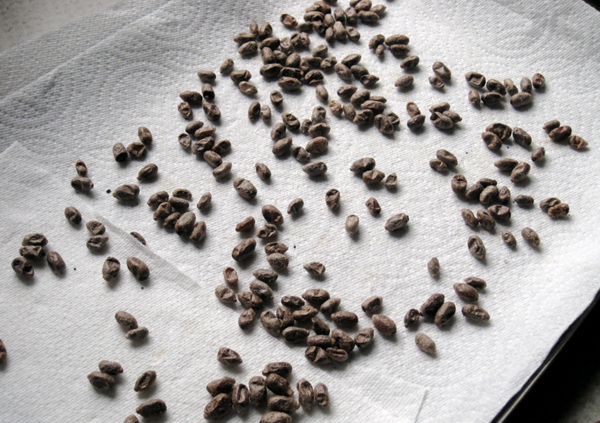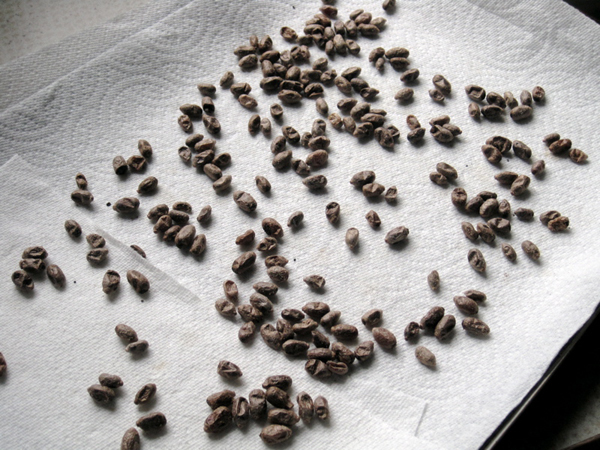Have You Heard the Buzz? Let’s Help the Bees!
 Most of us know already that there is a world-wide honey bee crisis; the bees are dying and our crops are threatened due to lack of pollination. This is a wake up call to which we can respond by helping our local bee populations.
Most of us know already that there is a world-wide honey bee crisis; the bees are dying and our crops are threatened due to lack of pollination. This is a wake up call to which we can respond by helping our local bee populations.
In part, a solution for pollination may lie with our own native species the orchard bee, or Mason bee. The Mason bee is only one of the many species of solitary bees, and is especially effective in pollinating fruit trees. A docile, friendly little fellow (or lady), the Mason bee rarely stings, but works tirelessly helping Mother Nature.
By making bees welcome in your garden with appropriate plantings, habitat, even housing, you will increase the production and ripening of your fruit and veggies, and aid in the setting of seed for your flowers as well.
As some solitary bees including the male Mason bees emerge early, spring flowers are a crucial source of sustenance for them. Come and ask us about plants that will attract this important member of your gardening team.
MASON BEES / BLUE ORCHARD BEES and CONDOS
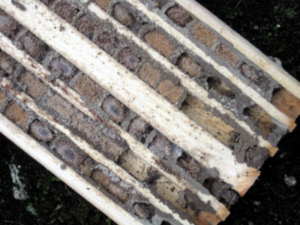 In October, bring in the cocoons, still in their rows into a garden shed or garage, the outer shell of the house can stay outside. Put them inside a metal or plastic container just to keep rodents away, until the winter cleaning, which can be any time from November to February. Cleaning the bees removes mites and mold which can be harmful to the cocoons.
In October, bring in the cocoons, still in their rows into a garden shed or garage, the outer shell of the house can stay outside. Put them inside a metal or plastic container just to keep rodents away, until the winter cleaning, which can be any time from November to February. Cleaning the bees removes mites and mold which can be harmful to the cocoons.
This job can be done right up to the beginning of February but when done earlier ensures more viable cocoons. We take the condos apart and carefully scrape the bees out of their rows (we use a small screw driver). Cells full of pinky/yellow bits but no cocoons contain pollen mites (Chaetodactylus krombeini) so leave them in the row and destroy them when you clean the wood.
To clean the bees use several tubs of cool, but not cold, water. Recycled plastic lettuce containers are perfect for this job. The bees are placed in the first tub of water and swished around gently to get the worst of the dirt off. Transfer them to the next tub of clean water and then to a third. After the third rinse, drain the bees in a colander and place them on cookie sheets covered with white paper towel. If many pollen mites (pinky coloured dots) are visible on the paper towel more washing is necessary.
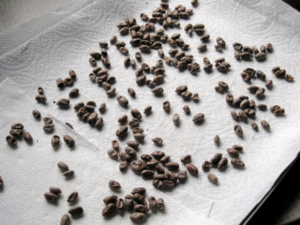 Return the cocoons to the paper towels. Bee cocoons are then left to dry in a protected, cool, airy location. Dry cocoons should be protected from mice and other predators before nightfall. For storage place the cocoons in cardboard boxes like shoe boxes and place them in wood or plastic containers. Do not place the cocoons directly into plastic as it is colder and the humidity is different. Keep the containers in a cool, frost free location for the winter.
Return the cocoons to the paper towels. Bee cocoons are then left to dry in a protected, cool, airy location. Dry cocoons should be protected from mice and other predators before nightfall. For storage place the cocoons in cardboard boxes like shoe boxes and place them in wood or plastic containers. Do not place the cocoons directly into plastic as it is colder and the humidity is different. Keep the containers in a cool, frost free location for the winter.
To clean the condos scrape out large bits with the screw driver. Use a stiff brush to clean the balance of debris and wash them well. Leave the condos in a very warm, dry location to destroy any mites that may have survived. Alternatively, the wood can be placed in a warm oven – about 150 degrees F, for 45 minutes.
RELEASING YOUR MASON BEES
In mid to late March with the hope that spring has arrived, and the promise of all that luscious fruit from your trees and bushes, it’s time to think about releasing your mason bees from their refrigerated snooze.
The male bees emerge about two weeks before the females, when it’s reliably 14 degrees C. They will need a source of pollen to survive while they wait for the females. One of the best food sources is Pieris and when it is in full bloom it is a good indicator that it’s time to start putting the bees out. Many other early-flowering perennials, shrubs and trees will also provide food. Native bulbs, Forsythia, Pulmonaria, Ribes (flowering currant), Mahonia aquifolium and Erica (heathers), attract not only the mason bees but the big clumsy bumble bees as well. See below for a full list. Clumsy is good in the bee world, as a big floppy pollinator spreads even more pollen around!
As soon as the females emerge, they mate with the waiting males and then the real frenzy of pollination takes place, with each female making about 1500 trips to your fruit blossoms for each egg she lays. An incredible amount of work, and sadly she will die after three weeks of this exhausting labour.
If you do have an orchard with trees that blossom at different times and lots of mason bee cocoons, put out a batch now and follow up with more, timing subsequent releases to coincide with the swelling of the buds on the fruit trees.
If you have purchased bees, they will likely be in a pack of 25, with a few more males than females and will be enough to fill one bee house. If you have bees sleeping peacefully in your fridge and are planning to release them in stages, then you will need to divide them by gender, to ensure a good mix of males and females. If you have lots of bees and want to encourage them to stick around, you’ll need more than one house.
OK, so how do you tell a male from a female mason bee? No, there will be no microscopic viewing needed. The females are in the big bodacious cocoons, about the size of a good plump raisin, the males are the puny ones, more like a currant. Hmmmm, what about all those middle sized ones? Not too sure about them? They are known as indeterminates and could be either male or female. I generally put 10 females, 12 males, and 3-5 indeterminates in a group, which is sufficient for one bee house.
The females want to lay their eggs near where they are released, so to encourage them to use your bee house, put the release box right near the house. I put the cocoons in a small cardboard box, such as you’d get jewellery in, with a hole for the bees to crawl out of. I tuck it right into the bee house, in the vacant area above the nesting trays, pushing it back a bit so there is a bit of a platform for the groggy bee to sit and recover before flying off. Another good option is to tape two of those shallow styrofoam meat trays together, face to face, and make a hole for escape. The hole should be around the size of a pencil, or about 5/16th of an inch. You can also place the cocoons directly into the trays, with the larger females in back and the smaller male cocoons in the front of the rows.
The bees will do the rest. When the temperature is reliably around 14 degrees C, you will notice males flitting around the garden, and a couple of weeks later you’ll start noticing the holes in the house filling up with mortar, which the females use to block access to their developing brood.

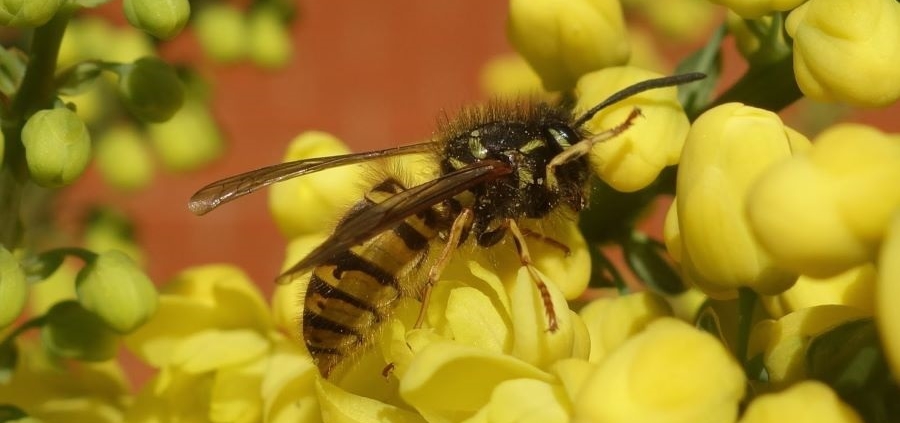
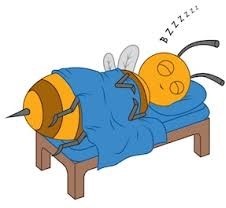
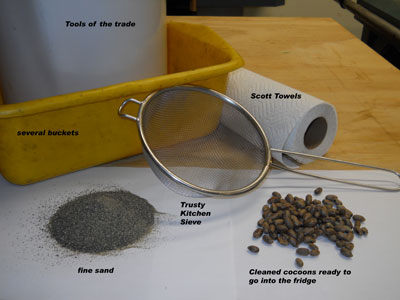


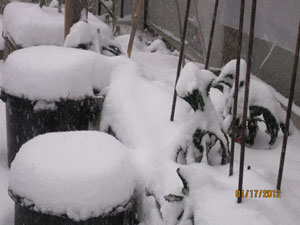


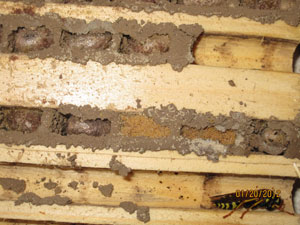
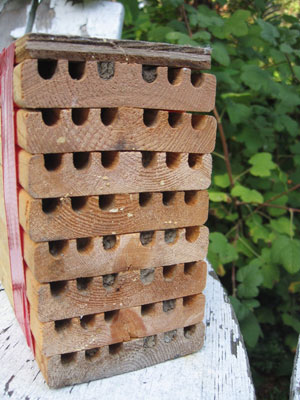

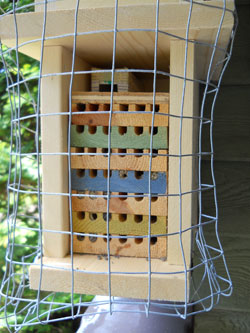
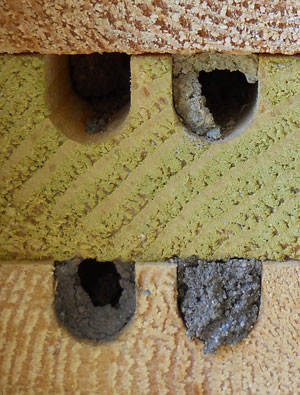
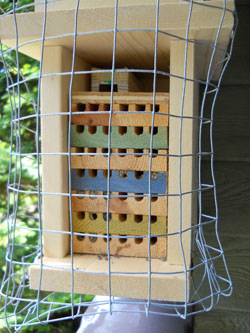
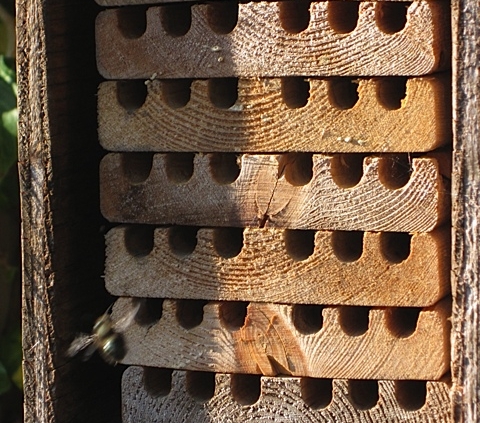
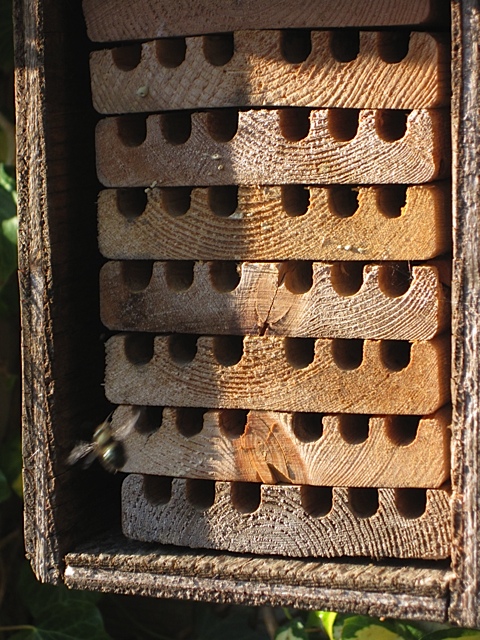
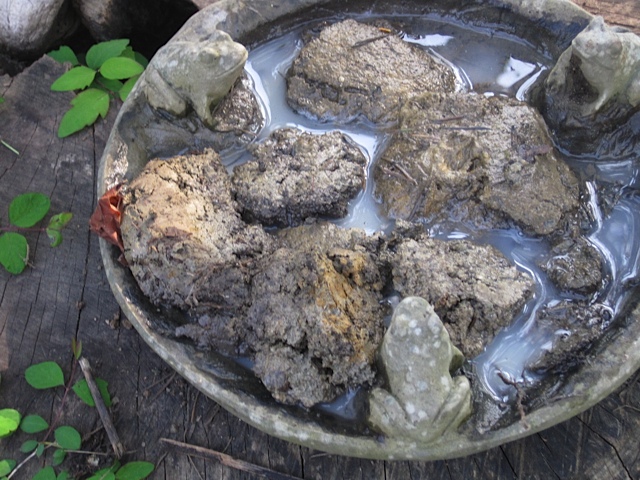
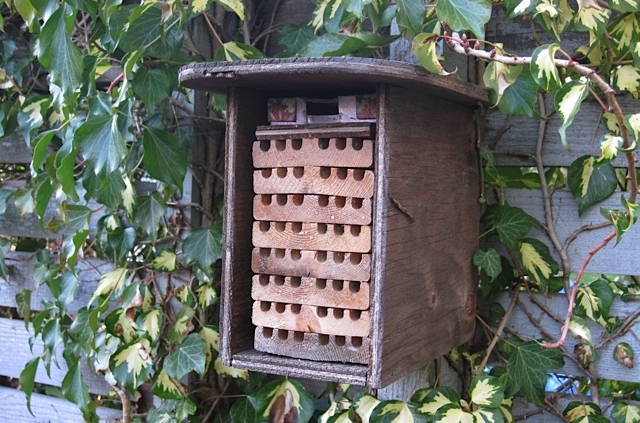
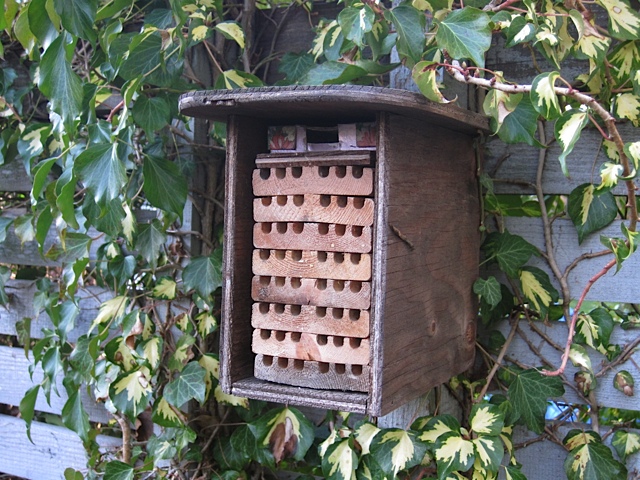
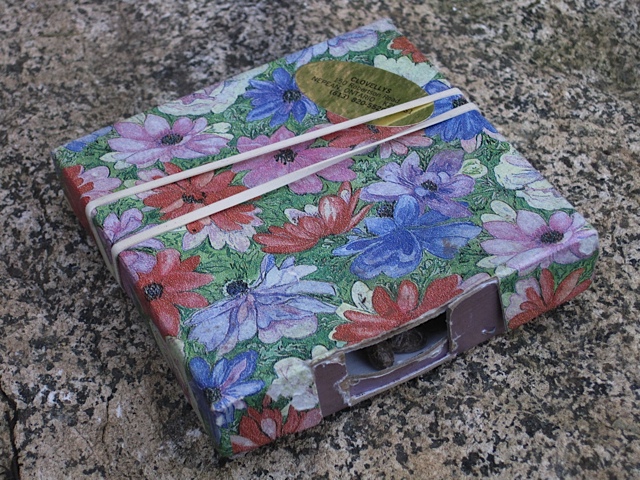 My release box is just a little cardboard box that jewellery came in, with a hole cut for the bees to crawl out. You can actually see some of the cocoons inside. When I place it inside the bee house, I recess it a bit, so there is a platform for the bees to rest before flying off. Some people actually put the cocoons back inside the bee house, making sure to put the female cocoons towards the back, as the males crawl out first. Any small container is fine. Don’t make the holes too big, or predators could get in.
My release box is just a little cardboard box that jewellery came in, with a hole cut for the bees to crawl out. You can actually see some of the cocoons inside. When I place it inside the bee house, I recess it a bit, so there is a platform for the bees to rest before flying off. Some people actually put the cocoons back inside the bee house, making sure to put the female cocoons towards the back, as the males crawl out first. Any small container is fine. Don’t make the holes too big, or predators could get in.